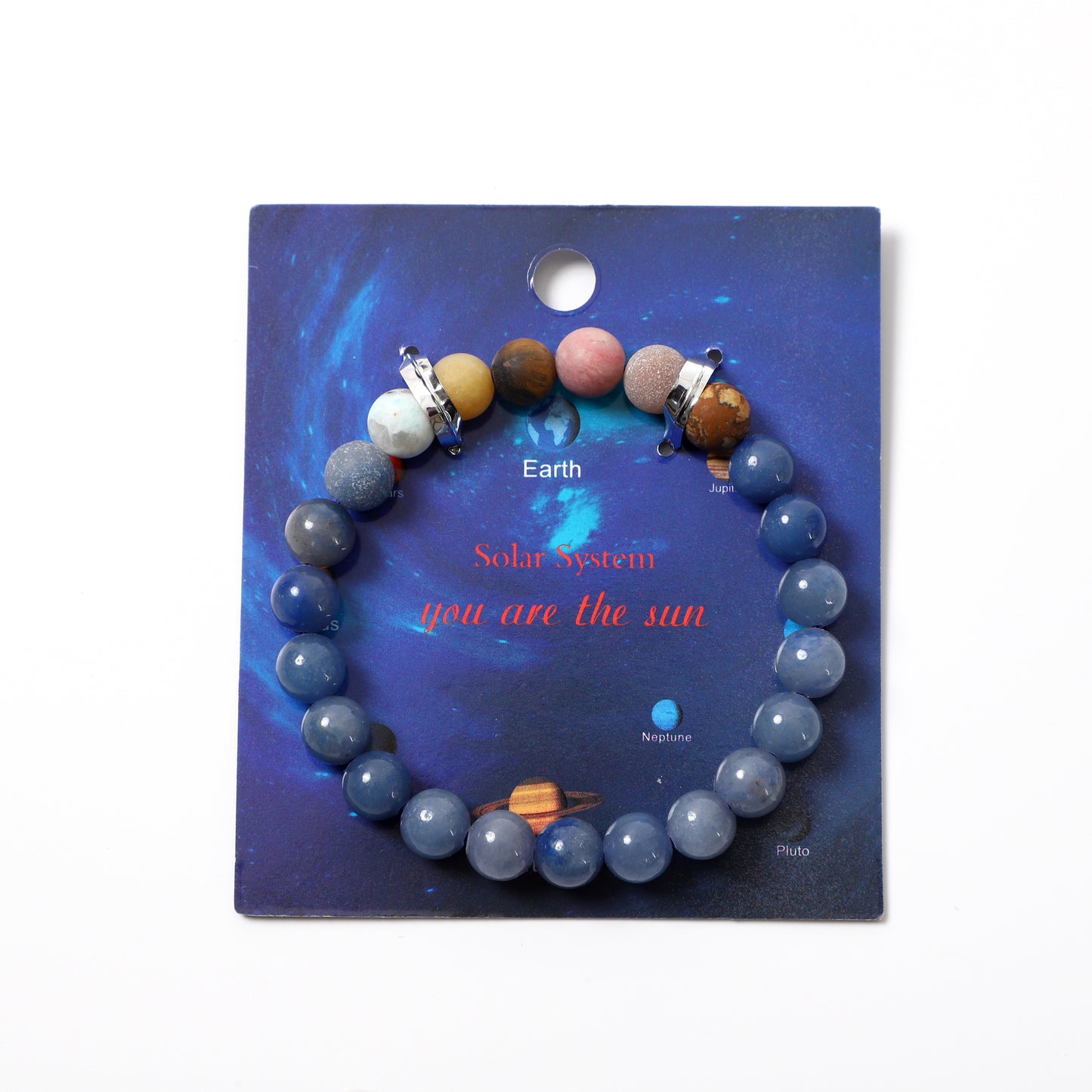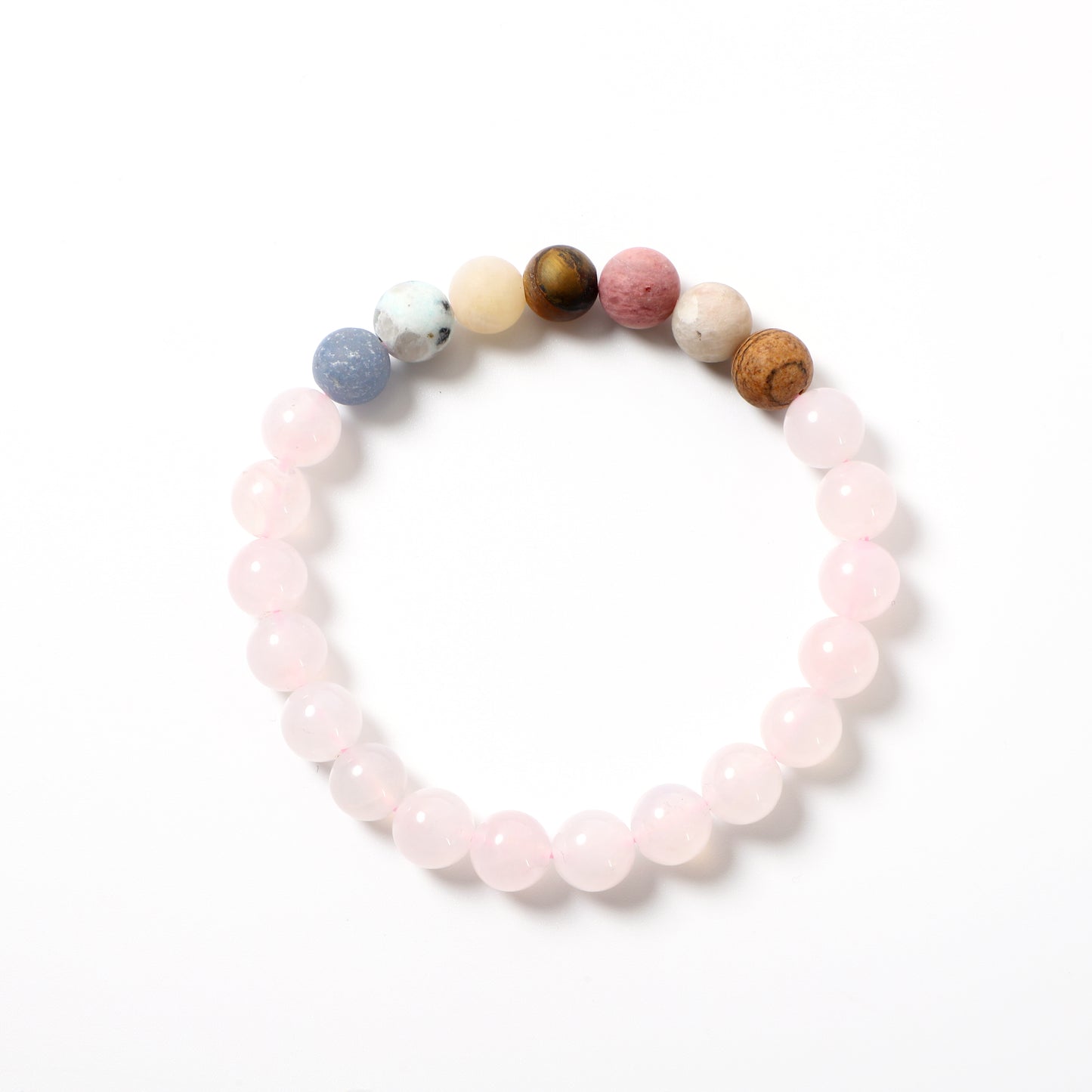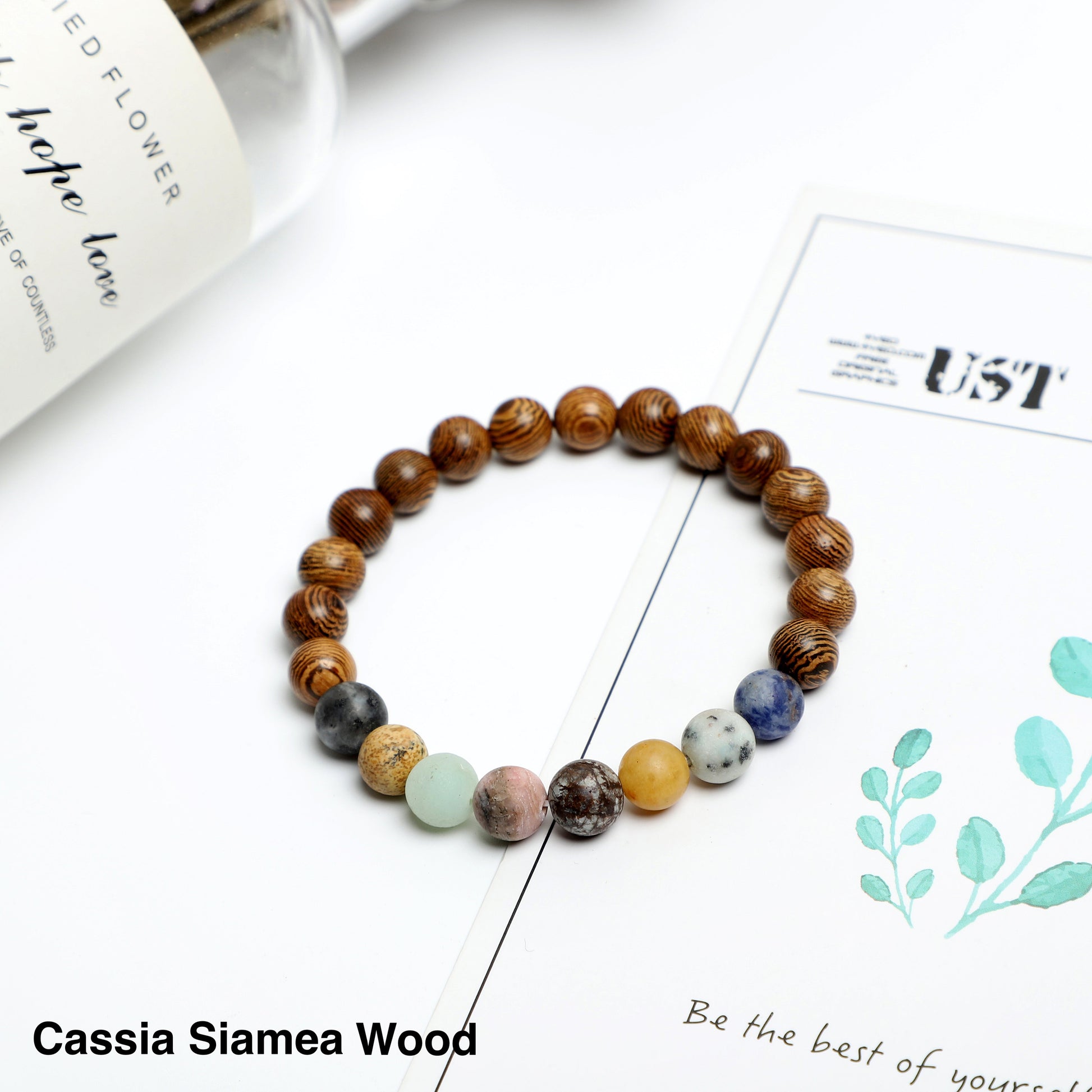1
/
of
7
ROLA DIRECT BUY
Solar System Bracelets
Solar System Bracelets
Regular price
$2.50 USD
Regular price
Sale price
$2.50 USD
Unit price
/
per
Couldn't load pickup availability
- Materials: Lava Rock, Wooden, Gemstone beads.
- Bead Size: 8mm
- Bracelets Size : 17cm / 6.7"Elastic String
- For: Men, Women, Boys, and Girls.
- Packing: Every bracelet with Meaning Card
Lava Rock gives us strength and courage, allowing us stability through times of change. It provides guidance and understanding in situations where we may need to re-evaluate the situation.
 Mercury is the smallest planet in our solar system. Made mainly of metal and rock, Mercury is the closest planet to the sun but not the hottest (Venus has experienced higher temperatures). It has no moons, no rings, and 38% the gravity of Earth. A day on Mercury lasts 176 Earth days.
Mercury is the smallest planet in our solar system. Made mainly of metal and rock, Mercury is the closest planet to the sun but not the hottest (Venus has experienced higher temperatures). It has no moons, no rings, and 38% the gravity of Earth. A day on Mercury lasts 176 Earth days.
 Venus has no moons or rings, and can reach temperatures of nearly 880°F. It is sometimes called the morning or evening star because Earth’s moon is the only thing brighter than Venus in the night sky. The core is made of iron and metal. Venus rotates in the opposite direction of Earth.
Venus has no moons or rings, and can reach temperatures of nearly 880°F. It is sometimes called the morning or evening star because Earth’s moon is the only thing brighter than Venus in the night sky. The core is made of iron and metal. Venus rotates in the opposite direction of Earth.
 Earth, Our planet is the only one in the solar system that has life. It is the only planet that has an atmosphere humans can breathe, and the only planet that has liquid water on its surface. The Earth is the only one of the inner planets (Mercury, Venus, Earth, and Mars) to have one large satellite, the Moon.
Earth, Our planet is the only one in the solar system that has life. It is the only planet that has an atmosphere humans can breathe, and the only planet that has liquid water on its surface. The Earth is the only one of the inner planets (Mercury, Venus, Earth, and Mars) to have one large satellite, the Moon.
 Mars is named after the Roman god of war and has two moons named Phobos and Deimos. Because Mars doesn’t have any oceans, it has nearly the same land surface as the Earth. Mars’s surface is dry and much of it is covered with reddish dust and rocks making it appear red when viewed from Erath’s surface.
Mars is named after the Roman god of war and has two moons named Phobos and Deimos. Because Mars doesn’t have any oceans, it has nearly the same land surface as the Earth. Mars’s surface is dry and much of it is covered with reddish dust and rocks making it appear red when viewed from Erath’s surface.
 Jupiter is the largest planet in the solar system and has more than 50 moons. Four of the moons are the size of planest. Io, one of the moons, has more volcanoes than any other planet in the solar system. Jupiter has rings made of dust and bits of rock, a fact that surprised scientists when the rings were discovered in 1979. The “Red Spot” on Jupiter is a gigantic storm that has been visible for at least 300 years.
Jupiter is the largest planet in the solar system and has more than 50 moons. Four of the moons are the size of planest. Io, one of the moons, has more volcanoes than any other planet in the solar system. Jupiter has rings made of dust and bits of rock, a fact that surprised scientists when the rings were discovered in 1979. The “Red Spot” on Jupiter is a gigantic storm that has been visible for at least 300 years.
 Saturn is the second-largest planet in our system and is made up of more hydrogen than helium so it’s less dense ( If we could fit Saturn into a bathtub it would float ) It has a small rocky core covered with liquid gas. The rings surrounding Saturn stretch out into space for thousands of miles and made up of millions of ice crystals, some as big as houses and others as small as specks of dust
Saturn is the second-largest planet in our system and is made up of more hydrogen than helium so it’s less dense ( If we could fit Saturn into a bathtub it would float ) It has a small rocky core covered with liquid gas. The rings surrounding Saturn stretch out into space for thousands of miles and made up of millions of ice crystals, some as big as houses and others as small as specks of dust
 Uranus turns on its axis once every 17 hours and 14 minutes, and makes one trip around the Sun every 84 Earth years. It’s often referred to as an “ ice giant” planet and has an upper atmosphere made of water, ammonia, and methane ice crystals that give the planet its pale blue color. Uranus has hit the coldest temperatures of any planet at -371°F although Neptune is usually colder.
Uranus turns on its axis once every 17 hours and 14 minutes, and makes one trip around the Sun every 84 Earth years. It’s often referred to as an “ ice giant” planet and has an upper atmosphere made of water, ammonia, and methane ice crystals that give the planet its pale blue color. Uranus has hit the coldest temperatures of any planet at -371°F although Neptune is usually colder.
 Neptune is the coldest planet in the solar system. Its largest moon, Triton, has a retrograde orbit meaning it orbits Neptune backward from the rest of the moons ( there are 13 known moons). Despite its huge size, the gravity on Neptune is similar to that on Earth. Neptune’s atmosphere is mostly made up of hydrogen with a smaller amount of helium, which gives it its blue color.
Neptune is the coldest planet in the solar system. Its largest moon, Triton, has a retrograde orbit meaning it orbits Neptune backward from the rest of the moons ( there are 13 known moons). Despite its huge size, the gravity on Neptune is similar to that on Earth. Neptune’s atmosphere is mostly made up of hydrogen with a smaller amount of helium, which gives it its blue color.
Share






























